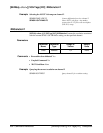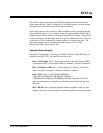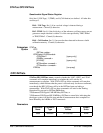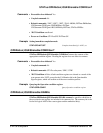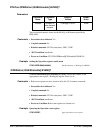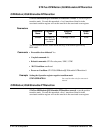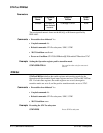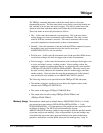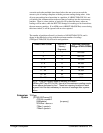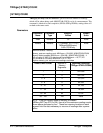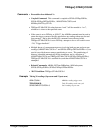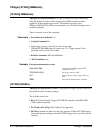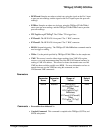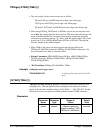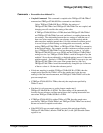
TRIGger
The TRIGger command subsystem controls the fourth state in a four state
measurement process. The four states which occur during a successful reading are
idle, initiated, wait-for-arm, and wait-for-trigger. The last two states have event
detection associated with them which control when they exit the current state.
These four states are more fully described as follows:
• Idle -- In this state, the instrument is not measuring. This is the state where
setting changes are done via commands to the instrument. This state is exited
when an INITiate command is received. This state is returned to after a reset,
successful completion of measurement, or abort of measurement.
• Initiated -- Once the instrument is initiated with the INITiate command, it passes
through this state, and continues down to the wait-for-arm state if
ARM:STARt:COUNT is not yet satisfied.
• Wait-for-arm -- In this state, the instrument waits for the specified ARM event to
occur before exiting to the wait-for-trigger state to make a measurment.
• Wait-for-trigger -- In this state, the instrument waits for the specified trigger event
to occur, and when it occurs, a reading is taken. After a reading is taken, the
cumulative number of readings taken thus far is compared to the count specified
in TRIGger:STARt:COUNt or SENSe:SWEep:POINts. When the count is met,
the state is exited, otherwise, the instrument waits for another trigger and takes
another reading. Upon exit from this state, the instrument goes to the initiated
state and checks to see whether or not ARM:STARt:COUNt is satisfied.
The following controls can be specified from the TRIGger:STARt subsystem:
• The number of triggers (readings) to occur before the digitizer returns to the
initiated state (TRIGger:STARt:COUNt).
• The source of the trigger (TRIGger:STARt:SOURce).
• The sample time for each reading (TRIGger:STARt:TIMer1) and
(TRIGger:STARt:TIMer2).
Memory Usage Measurements which specify multiple bursts (ARM:STARt:COUNt > 1) of both
pre-arm and post-arm readings (SENSe:SWEep:OFFSet:POINts ≤ -3 with
SENSe:SWEep:POINts > 9) cause memory to be partitioned into segments to hold
each burst of readings. The HP E1429 will automatically allocate
ARM:STARt:COUNt memory partitions large enough to hold the specified number
of pre-arm and post-arm readings. Since a large number of pre-arm readings may
occur before the arm event causes post-arm readings to be taken, each memory
partition is treated like a circular buffer where pre-arm readings may "wrap" or
272 Command Reference TRIGger Subsystem



